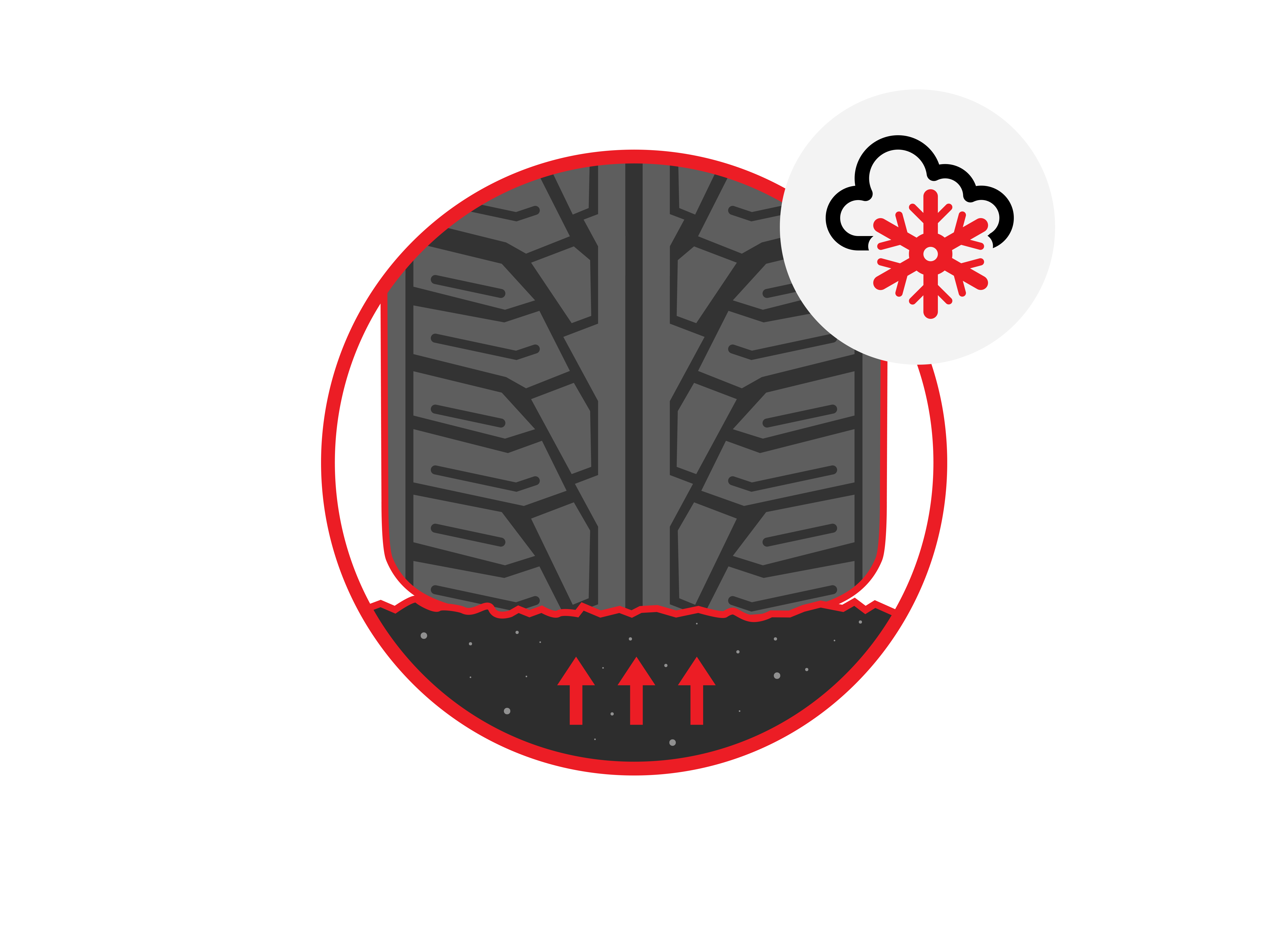
Average tyre life
Things you should consider
How long should tyres last? How can I make my car tyre life last longer? And when do I have to get new tyres? These are questions that drivers have to deal with constantly. For safety and the enjoyment of driving, even in the rain, fully intact tyres are an absolute must. Fortunately, keeping tyres in good shape is not hard at all. Read more here about key tips and tricks.
The rule of the thumb: How long should tyres last?
There are no statutory prescriptions on how long a tyre might last. The only exception is: tyres for trailers that have a special permit for a maximum speed of 60 mph may be no older than six years. In all other cases, it is up to the driver to decide when the tyres have exceeded their lifespan. Nevertheless, the road traffic regulations stipulate very clearly that a car with all its equipment must be roadworthy at all times. That, of course, includes the tyres.
There are a few criteria that will help you to decide if you can keep using your tyres and when you should replace them. As a guide, the following applies: You drive with four similar tyres, each of which has a tread depth of at least 1.6 mm (legal minimum tread depth), and are no more than ten years old.
Please note: Safe driving in wet and snowy weather conditions is affected by the tread depth, the pattern design and the rubber compound of the tread of your tyres. On wet or snow-covered roads braking performance will progressively decline with lower tread depths. On wet roads there is an additional increased risk of aquaplaning with fading tread depths.
Therefore, check your tyres regularly, reduce your speed on wet and snowy roads and consider replacing your tyres in good time.
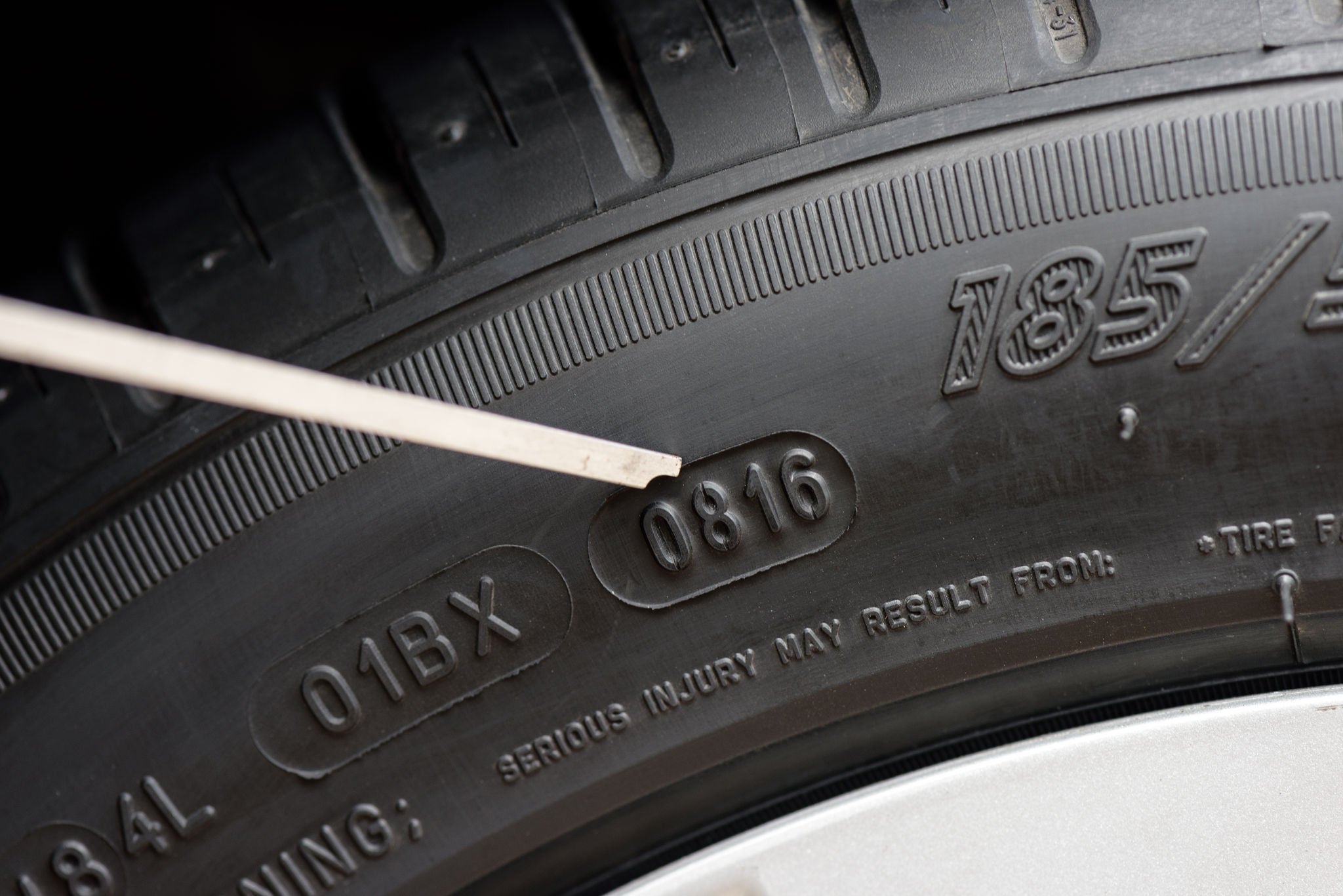
Good to know: Tyre lifespan
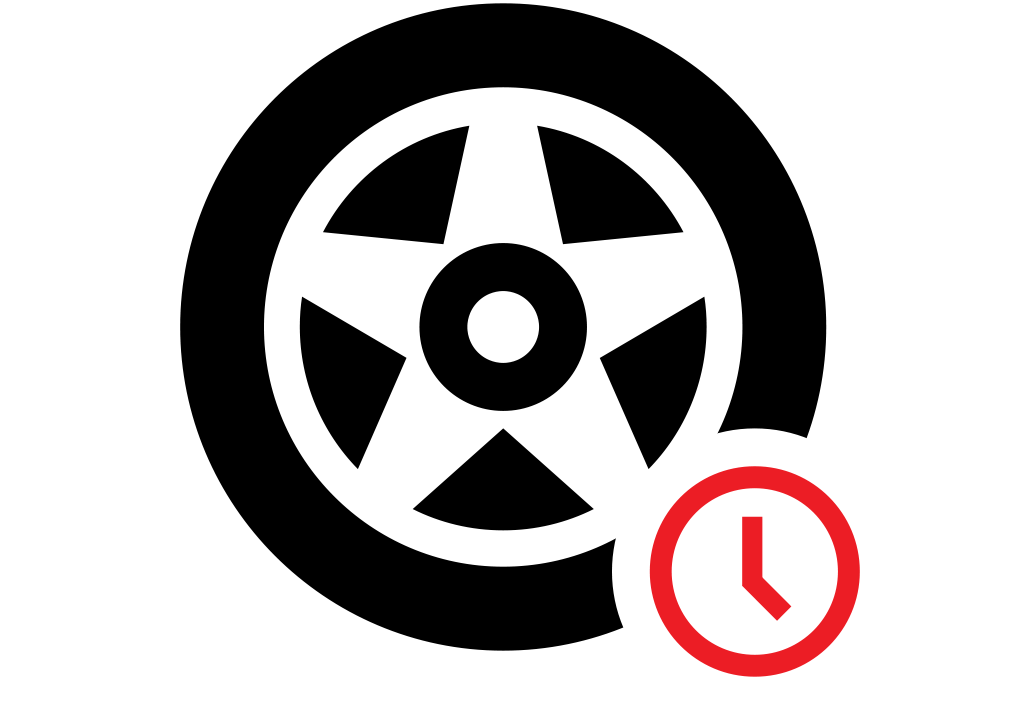
The age of the tyres speaks much about their roadworthiness. What’s more, it has nothing to do with their mileage and wear: over the years, the rubber in the tyres will become more brittle, braking distances will become longer and the traction that ensures better performance on slippery surfaces will also deteriorate. However, adequate road grip and traction, particularly when driving in snow during the winter or on wet roads, is vitally important.
Studies clearly demonstrate, for example, that summer tyres become less safe over the years – and that was despite all tested tyres having a tread depth of at least 5 mm. However, this impairs braking performance. This occurs primarily in wet conditions and with aquaplaning, but performance on dry roads is also affected. A further aspect concerns technical advancements. The older a tyre is, the less it conforms to ever-advancing safety standards.
While there are indeed no precise statutory requirements as to how old a car tyre may be, sensible indicators do exist that you can use as a guide. What you should know: you can work out the tyre age for yourself, using one of the codes moulded on the tyre. We will now talk about the tyre age at which you should replace your tyres. One more tip for when you buy a used car: if you want to be on the safe side and not have an unpleasant surprise later on, do get confirmation of the age of the tyres at the time of purchase.
Tyre age: Old DOT numbers
If you find only three digits and a small triangle on the sidewalls of the tyre, then the first two digits indicate the calendar week and the last digit indicates the year in the 1990 to 1999 period. If there is no triangle, then the tyre is from the 1980s at the latest, and you should purchase new tyres at the earliest opportunity.
Tyre wear: What can you do about it?
Aside from age, there are many other factors that affect how long tyres last. One factor, for example, involves kerbstones, weathering, collisions with objects or incorrect vehicle settings. As the owner of your car, you can do some things yourself to ensure that your tyres have a long lifespan. Check the tread surface and sidewalls of your tyres regularly.
You can, for example, test the wheel alignment yourself by taking your hands off the steering wheel while travelling at about 35 to 50 mph on a road that is as level as possible and has little traffic: if the car veers noticeably to one side, you should have it checked at a garage and get it readjusted.
If there is poor balancing, excessively low tyre pressure or worn-out shock absorbers, you can take the appropriate measures to address these problems. That way you can extend the lifespan of your tyres and avoid having to replace your tyres early.
Proper storage: How to store your tyres
The storage itself will also affect how long the tyres will last. To prevent premature ageing of the tyres, make sure they are protected from UV light. If possible, store the tyres in a cool, dry and dark place.
Important: Make sure that the tyres do not come into contact with solvents, lubricants or chemicals. Do not store tyres in the same place as equipment that produces ozone (for example, electrical generators or electric motors used in compressors). That is because over time, ozone is harmful to the rubber compound in the tyres. If no suitable storage space is available, you can also have the tyres stored at a garage.
Extend the lifespan of your tyres: Tips at a glance
So that you can get long-lasting use from your tyres, we have compiled the most important tips and tricks for you here:
- Four similar tyres that each have a tread depth of at least 1.6 mm and are no more than ten years old.
- The material properties of the tyres deteriorate with age – regardless of mileage or possible wear and tear.
- The DOT code imprinted on the tyres tells you when the tyres were manufactured and provide a point of reference for replacing the tyres.
- Check the sidewalls and tyre tread regularly for wear.
- Make sure the tyres are stored properly.
We hope you have a safe journey!
Car tyres and the material used
What constitutes a tyre?
We use different tyres depending on the season and environment. These differences might be obvious, for example in the tread depth. However, they might be harder to spot or even go unnoticed in other areas. Take the tyre rubber compound, for example: Although different compounds are hard to distinguish from one another, they have a significant impact on tyre properties.
So, what exactly is a tyre made of?
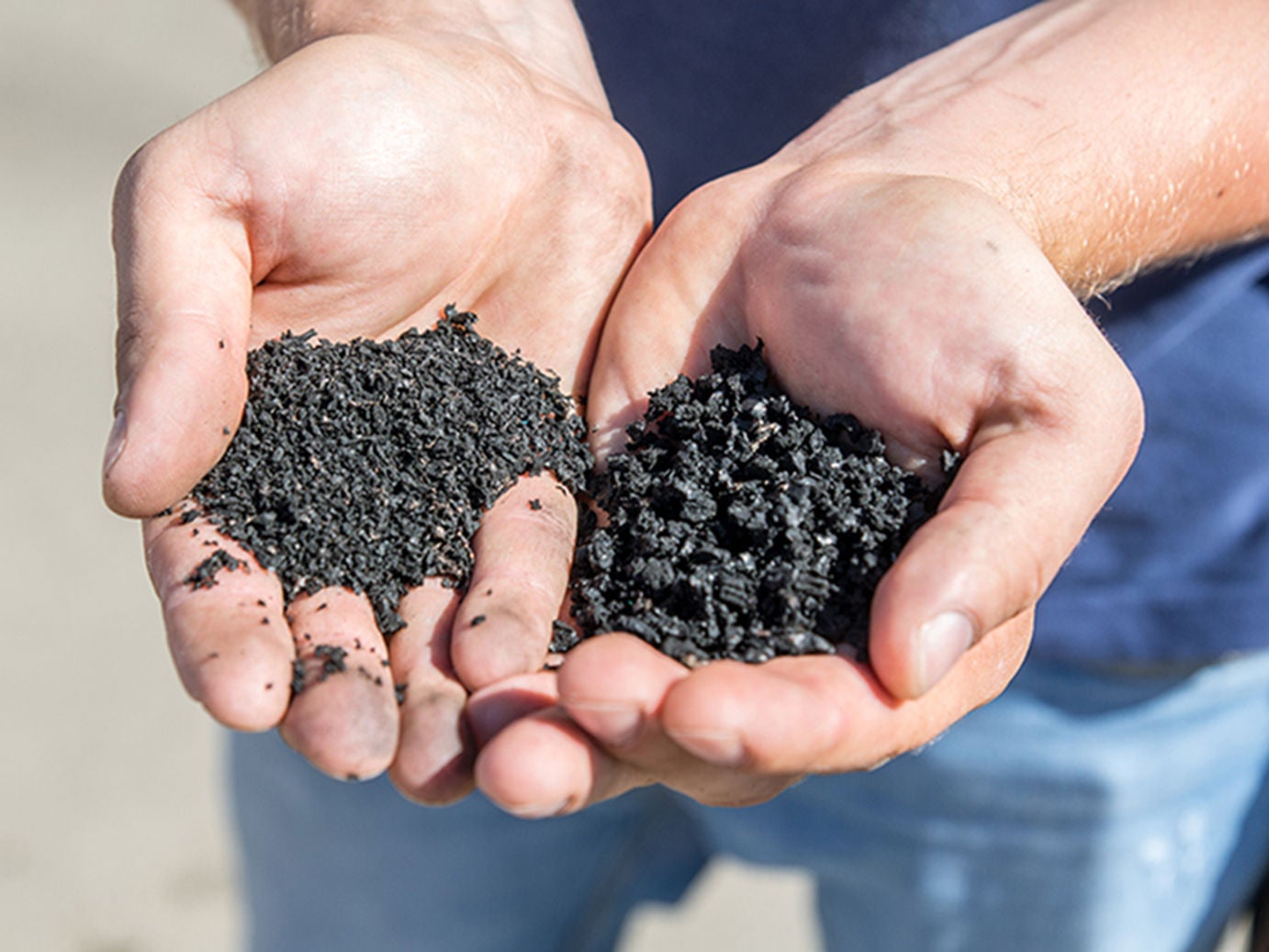
A closer look at the rubber compound of tyres
First of all, it is important to know that rubber compounds vary from manufacturer to manufacturer. These compounds vary between the different tyre sizes and types and always depend on the preferred driving characteristics. Tyre material consists of the following elements, in varying quantities depending on use:
Rubber
Natural and synthetic rubber (also known as polymer) are the main components of a car tyre. Depending on the variety, these materials provide a high level of slip resistance and, after processing, the preferred elasticity. Apart from that, rubber has the disadvantage that it wears out quickly and can harden at low temperatures or become soft at high temperatures.
Natural rubber is harvested from rubber trees on large plantations. In the process, the bark of the tree is cut and the milky sap is collected. You might know the milky sap as latex. In contrast, synthetic rubber offers the advantage that its properties can be modified. As the manufacturer, when selecting materials we can ensure that your tyres will get you safely through any weather.
Fillers
In general, fillers are added to the rubber. These fillers can be carbon black, silica, carbon or chalk. They bind the rubber and make it more resistant to wear, as rubber on its own can crumble, particularly as a result of breaking. We use fillers to counter this effect and increase the mileage of your tyres. However, this can harden the rubber compound a little.
Fillers are also the reason for the colour of tyres. Carbon black was the first filler to be used and gave the tyres their colour. However, coloured tyres never made their breakthrough, even when other fillers and therefore other colours came into play later on. That is why tyres are still black to this day.
In contrast to the early days, we use silica in the compound for modern tyre manufacturing. Silica is the name given to silicic acid salt. This substance binds the rubber particularly well with the sulphur, which is essential for the vulcanisation of the tyres later on. During this process, the tyre material is heated to combine the chemical bonds of the individual substances to create elastic rubber. This allows us to provide good mileage without having to sacrifice other properties.
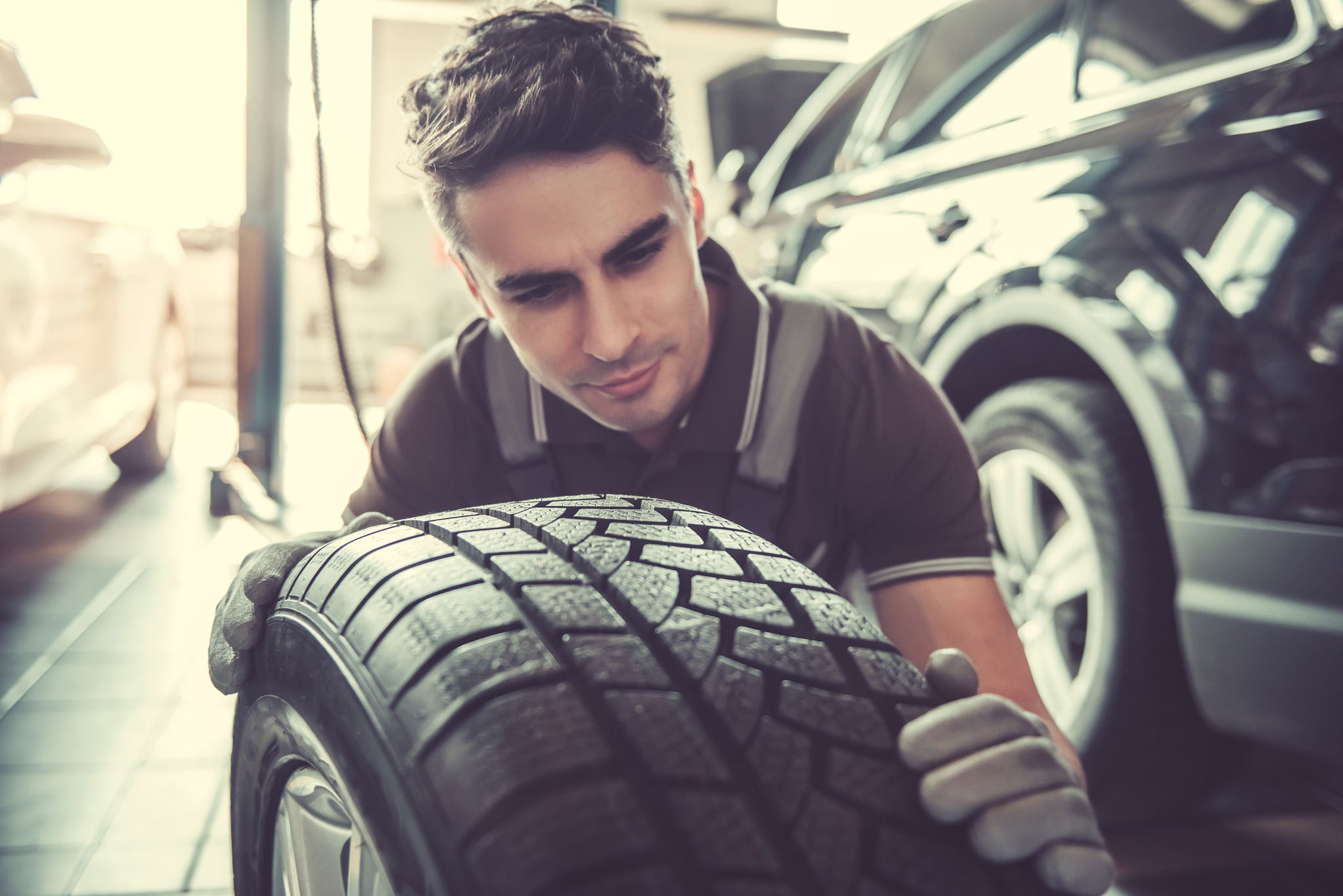
Plasticiser
Plasticisers are needed to ensure that the tyre gives you a positive and safe feeling while driving, even in snow and rain. These oils and resins make the tyre flexible and improve the grip of the material. For you, the driver, this means that plasticisers improve rolling resistance. Oils also add to the slip resistance of the tyre. That's why more oils are used in winter tyres than in summer tyres; plasticisers prevent the rubber from hardening at low temperatures.
We explain why winter tyres are particularly effective at temperatures below 7°C.
More about tyre material
In addition to the main components of rubber, fillers and plasticisers, chemicals, such as sulphur as mentioned above, and antioxidants are also used in tyres. These also affect driving behaviour. The development of a new rubber compound involves constantly balancing the materials. A complex process that varies from tyre to tyre and the material used.
The importance of tyre age and tread depth
Did you know
If you drive relatively few miles every year, you might find that your tread depth remains fairly intact for several years. But, importantly, that doesn’t mean your tyres are roadworthy.
How to check your tyre age
1. Look for the markings on your tyre’s sidewall
2. Find a four-digit code
3. The third and fourth numbers indicate the year of manufacture
4. If this is longer than 10 years ago, we recommend you replace your tyres
What happens when tyres age?

As tyres age, they begin to crack in their sidewalls. This happens when UV light oxidises the rubber, causing it to dry out. Although tyres contain anti-oxidising chemicals to slow this process down, these only work when the tyres are moving. If your car is left unused for some time, or your tyres are stored away, they’ll deteriorate faster than if they’re used frequently.
What if I can’t remember when I had them fitted?
The good news is that you don’t have to rely on your memory to work out your tyre age. Their ‘date of birth’ is written on the tyre sidewall.
Look out for a four-digit code. The first two figures represent the calendar week in which it was made (from 1 to 52) and the second two figures are the year of manufacture. So a code of 1316 would mean your tyre was made between 28th March and 3rd April 2016.
Tyres manufactured before the year 2000 show three figures instead of four.
When is my tyre age considered too old?
We recommend that all tyres are replaced when they reach ten years old, regardless of the depth of the tread.
Even if the tyre still looks good, we recommend you seek the advice of your local Uniroyal fitter if your car, or your tyres, have been unused for a long period of time. This applies to your spare tyre too. The fitter can look out for signs of premature ageing and advise you if your tyre is safe.
Which different tread patterns are there?
Tread patterns pros and cons
You may have heard terms like ‘symmetrical’ and ‘directional’ tread patterns. But what do they actually mean? And what exactly is ‘flow-optimised asymmetry’ as used in our RainSport tyres?
Directional tread patterns: sporty and safe on snow
Directional tyres are ideal for sporty cars that drive regularly on wet roads.
These tyres usually have a chevron or arrow-shaped tread pattern which aids fast water displacement due to the unimpeded water flow. They therefore offer high protection against aquaplaning and greater directional stability. This type of tread pattern is especially suited to snow- or mud-covered road surfaces and is therefore used on our winter and all season tyres.
Directional tyres are designed to work in only one direction of rotation and must be fitted accordingly. You’ll find an arrow clearly marked on their sidewalls pointing in the direction of travel.
Symmetrical tread patterns: comfortable and cost-efficient
Unlike directional, symmetric tyres can be fitted and rotated in either direction as both halves of the tread pattern are identical. They are particularly quiet and provide good roadholding. Their lower rolling resistance reduces fuel consumption and extends the lifetime of the tyres. They are often used for commercial vehicles and provide – like our RainMax 2 - good value-for-money for those that mainly drive short distances.
Benefits of the different tread patterns
Directional tread pattern:
- High aquaplaning protection
- Excellent handling on snow
- Very good roadholding at high speed
Symmetrical tread pattern:
- Pleasant driving smoothness
- High directional stability
- Low rolling resistance
Asymmetrical tread pattern:
- Excellent handling
- High curve stability
- Good grip in wet
Flow-optimised asymmetrical tread pattern:
- Highest level protection against aquaplaning
- Outstanding grip on bends and corners
- High curve stability
- Minimum noise
Asymmetrical tread pattern: safety in all kinds of weather
The first thing you’ll notice about asymmetric tyres is that they have different tread patterns on their inner and outer shoulders. Each side serves a different purpose.
The inner sides of the tread pattern are responsible for water displacement and aquaplaning protection. The outer shoulders, with their rigid tread blocks, provide higher lateral stiffness, which give you high grip when cornering and when driving on dry surfaces. For this reason asymmetrical tyres, like our RainSport 3, are especially popular with high performance hatchbacks and sports cars.
The even stiffness of the pattern blocks ensures a quiet interior noise throughout the tyre’s entire lifetime.
With asymmetrical tyres it is essential that you ensure correct fitting. The word “Outside” has always to be faced on the outside of the car.
Flow-optimised asymmetrical tread pattern: safe protection against aquaplaning
To develop our ‘Best in Wet’ tyres, Uniroyal has designed a new generation of asymmetrical profiles which combine the advantages of directional and asymmetrical tread patterns.
Both RainSport 3 and RainExpert 3, with their flow-optimised, asymmetrical treads, offer a high level of protection against aquaplaning. Meanwhile, Shark Skin Technology (SST) reduces flow resistance and accelerates water drainage from the tyres’ contact surface.
The tyre’s solid outer shoulders, with high lateral stiffness, provide high grip and precise handling when cornering.
What does tyre size mean?
And how to read the tyre sidewall
To the untrained eye, the side wall of a tyre can look like a meaningless set of numbers, letters and symbols. Hidden amongst these is the tyre size. But what does it look like and, more importantly, what does it mean?
Dissecting the code
The tyre size might read like this: P195/55 R16 87 V. Hardly user friendly but, when you know what it all means, you’ll realise it tells you useful information about the tyre’s construction, size and type.
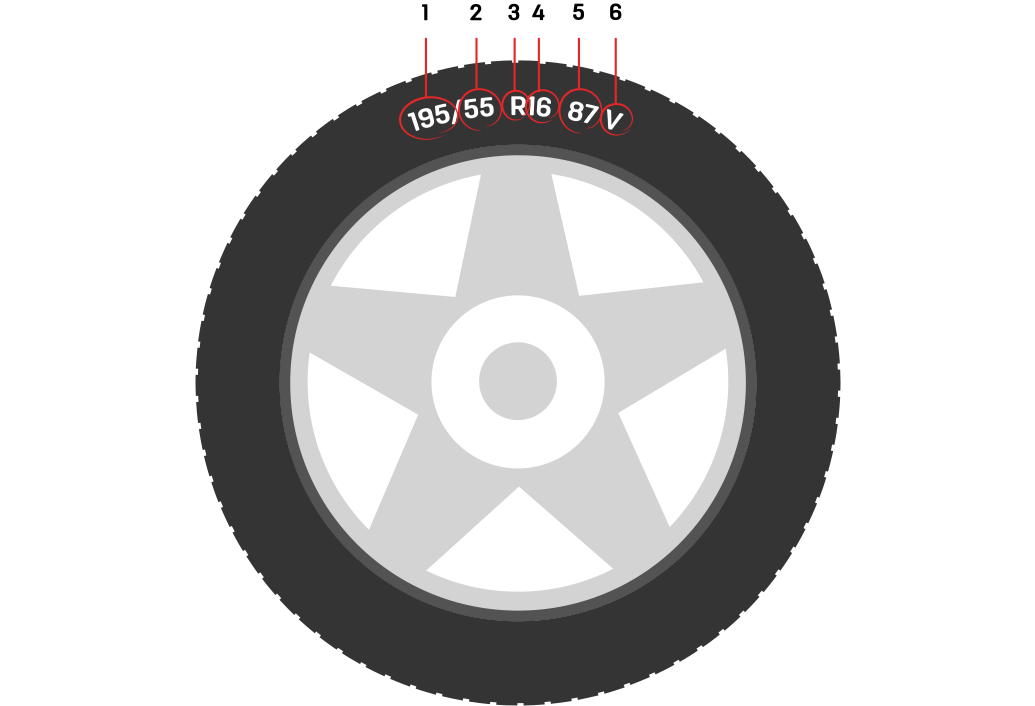 How the tyre size might appear.
How the tyre size might appear.
1 Cross section width
The first three numbers, in this case 195, refer to the section width of the tyre. This is the measurement, in millimetres, from the tyre’s inner sidewall to its outer sidewall.
2 Aspect ratio
The aspect ratio, or profile, refers to the height of the sidewall as a % of the section width. In our example, 55 means the height is equal to 55% of the 195mm width. The bigger the aspect ratio, the bigger the sidewall will be.
3 Construction type
The letter R means the tyre is a radial construction. Almost all new car tyres are radials.
4 Rim
The number to the right of the construction type is the rim diameter, measured in inches. In this case, it’s a 16” wheel.
5 Load index
The final number is the load index i.e. the maximum load (in kg) that the tyre can carry. See chart below
6 Speed symbol
The final character (in this case V) relates to the maximum speed of use. Again, the following table will clarify what your tyre’s symbol means.
| Load Index | Load in kg | Load Index | Load in kg | Load Index | Load in kg | Load Index | Load in kg |
| 62 | 265 | 79 | 437 | 96 | 710 | 113 | 1150 |
| 63 | 272 | 80 | 450 | 97 | 730 | 114 | 1180 |
| 64 | 280 | 81 | 462 | 98 | 750 | 115 | 1215 |
| 65 | 290 | 82 | 475 | 99 | 775 | 116 | 1250 |
| 66 | 300 | 83 | 487 | 100 | 800 | 117 | 1285 |
| 67 | 307 | 84 | 500 | 101 | 825 | 118 | 1320 |
| 68 | 315 | 85 | 515 | 102 | 850 | 119 | 1360 |
| 69 | 325 | 86 | 530 | 103 | 875 | 120 | 1400 |
| 70 | 335 | 87 | 545 | 104 | 900 | 121 | 1450 |
| 71 | 345 | 88 | 560 | 105 | 925 | 122 | 1500 |
| 72 | 355 | 89 | 580 | 106 | 950 | 123 | 1550 |
| 73 | 365 | 90 | 600 | 107 | 975 | 124 | 1600 |
| 74 | 375 | 91 | 615 | 108 | 1000 | 125 | 1650 |
| 75 | 387 | 92 | 630 | 109 | 1030 | 126 | 1700 |
| 76 | 400 | 93 | 650 | 110 | 1060 | ||
| 77 | 412 | 94 | 670 | 111 | 1090 | ||
| 78 | 425 | 95 | 690 | 112 | 1120 |
Tyre load rating table
| Speed Rating | Mile/Hour | Kilometers/Hour | Speed Rating | Mile/Hour | Kilometers/Hour | |
| N | 87 | 140 | U | 124 | 200 | |
| P | 93 | 150 | H | 130 | 210 | |
| Q | 99 | 160 | V | 149 | 240 | |
| R | 106 | 170 | ZR | 150+ | 240+ | |
| S | 112 | 180 | W | 168 | 270 | |
| T | 118 | 190 | Y | 186 | 300 |
Tyre speed rating table
Where can I find my car’s tyre size?
You’ll find you car’s tyre size on the tyres’ sidewall, in your car’s vehicle manual as well as on a sticker inside the driver’s door. If you’re still unsure, visit your nearest Uniroyal dealership for advice.
Tyre components
Which components make up modern car tyres?
Passenger car tyres are products of complex engineering. They consist of numerous rubber compounds, many types of carbon black, fillers like silica, and chemicals or minerals. Find out here how tyres are put together.
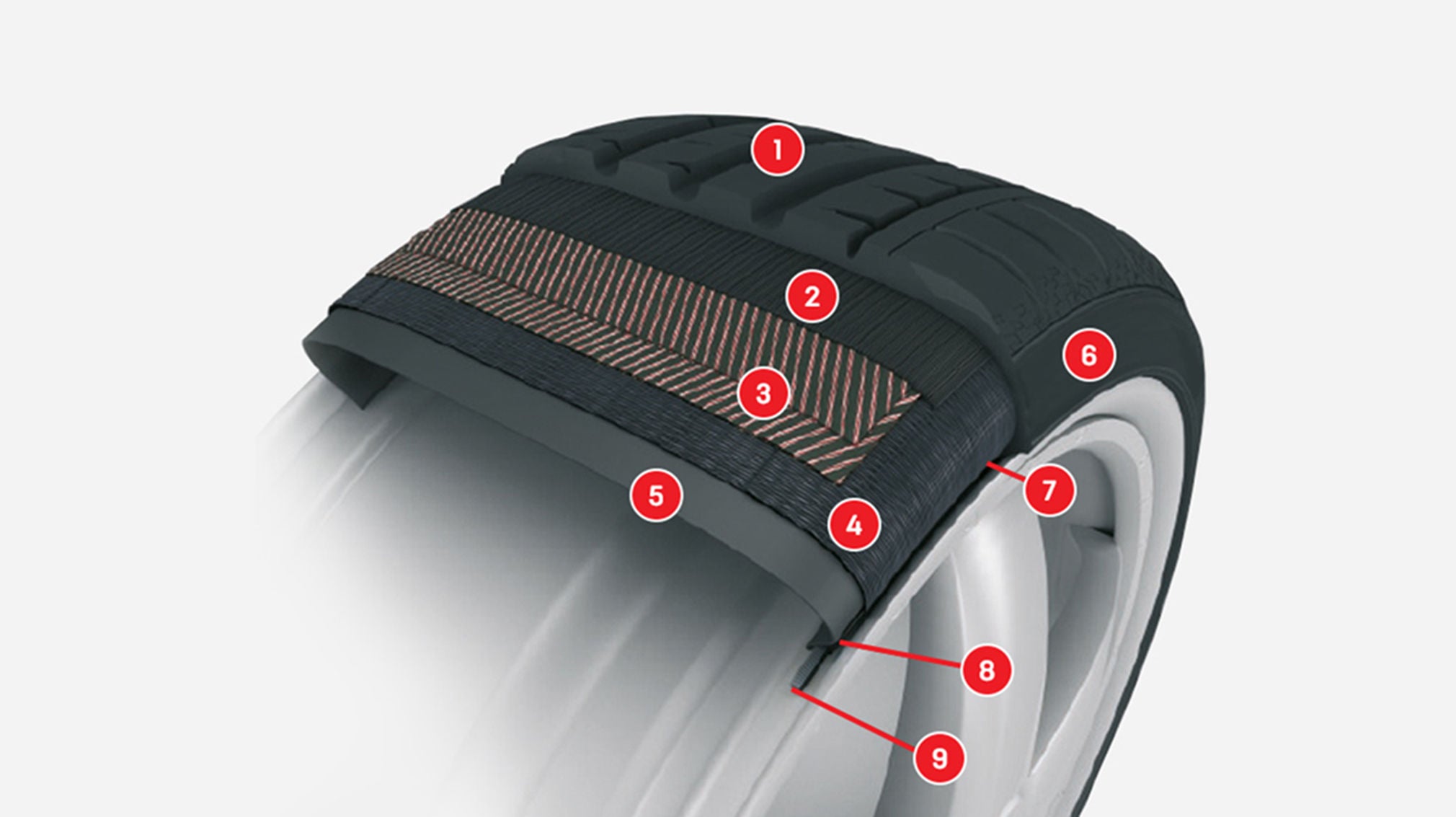
A tyre’s components
1. Tread. Made from synthetic and natural rubber, it’s comprised of three sections: the “cap”, which is responsible for gripping the road and providing directional stability and wear-and-tear resistance, the “base” which reduces rolling resistance and damage to the casing and the “shoulder” which forms an optimal transition from the tread to the sidewall.
2. Jointless cap plies. Found just underneath the outer layer of the tyre, this nylon cord, embedded in rubber, enhances high-speed suitability.
3. Steel-cord for belt plies. High-strength steel cords that enhance shape retention and directional stability. As well as reducing the rolling resistance they help to increase the tyre’s mileage performance.
4. Textile cord ply. Rayon or rubberized polyester controls the internal pressure and maintain’s the tyre’s shape.
5. The inner liner, made from butyl rubber, seals the air-filled inner chamber and acts as a tube in tubeless tyres.
6. The side wall protects the casing from external damage and atmospheric conditions. Information about the tyre can also be found on the side wall.
7. Bead reinforcement, made from nylon and aramid fibres, enhance directional stability and ensure steering precision.
8. Bead apex. This synthetic, rubber material also enhances directional stability and steering precision while improving comfort.
9. Bead core. This steel wire, embedded in rubber, ensures that the tyre sits firmly on its rim.
Related Topics
-
 2023/09/20Summer or winter tyresRead more
2023/09/20Summer or winter tyresRead more -
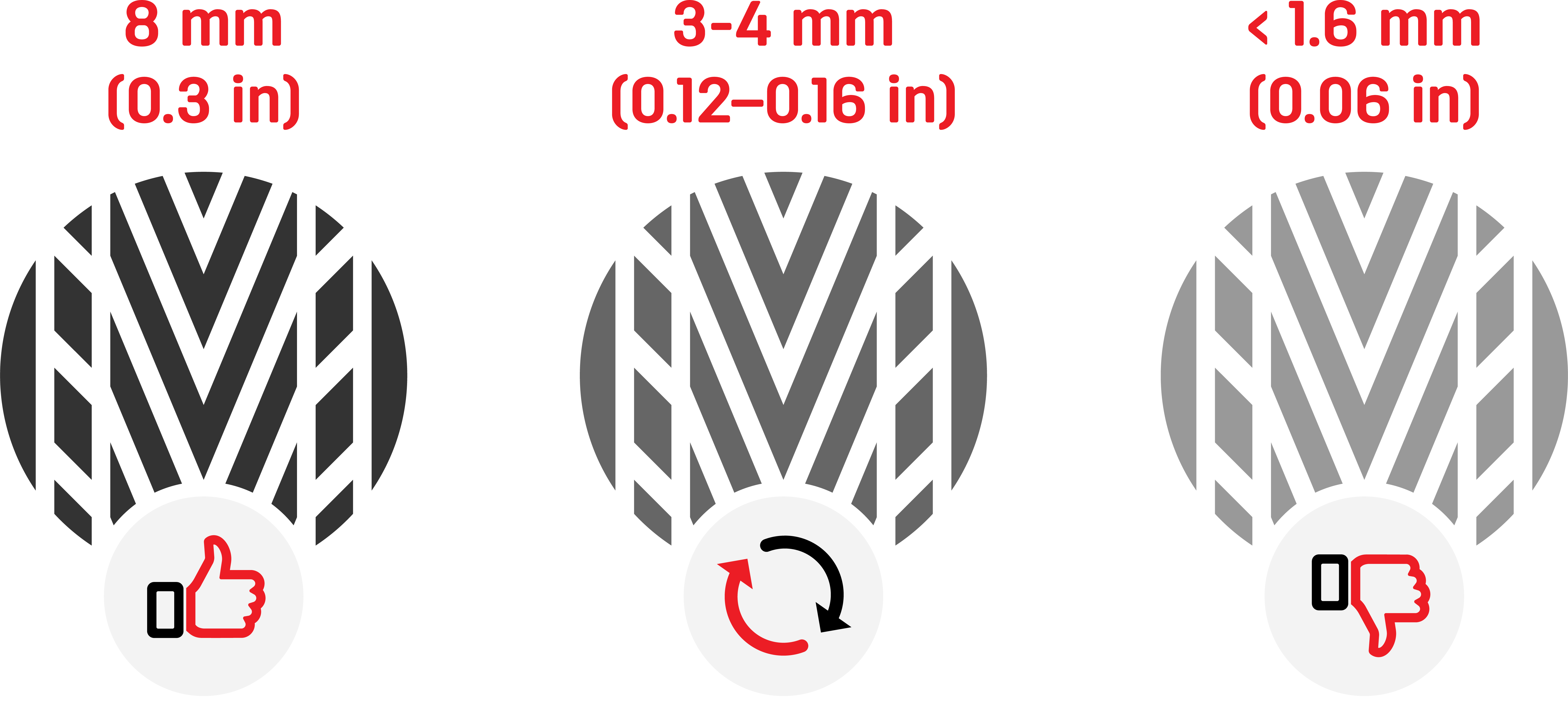 2023/09/20Tyre careRead more
2023/09/20Tyre careRead more -
 2023/09/20Safety & Driving TipsRead more
2023/09/20Safety & Driving TipsRead more